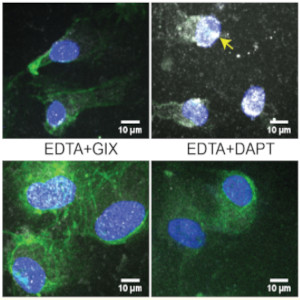Lydia L. Wu
Department of Surgery, Section of Pediatric Surgery, The University of Chicago, Chicago, Illinois
 http://orcid.org/0000-0001-8995-9223
Stephanie Shen
http://orcid.org/0000-0001-8995-9223
Stephanie Shen
Department of Surgery, Section of Pediatric Surgery, The University of Chicago, Chicago, Illinois
Henry Biermann
Department of Surgery, Section of Pediatric Surgery, The University of Chicago, Chicago, Illinois
Mildred Nelson
Department of Surgery, Section of Pediatric Surgery, The University of Chicago, Chicago, Illinois
Naina Bagrodia
Department of Surgery, Section of Pediatric Surgery, The University of Chicago, Chicago, Illinois
Ann M. Defnet
Department of Surgery, Section of Pediatric Surgery, The University of Chicago, Chicago, Illinois
Rebecca Kirschner
Department of Surgery, Section of Pediatric Surgery, The University of Chicago, Chicago, Illinois
Peter Hahn
Department of Surgery, Section of Pediatric Surgery, The University of Chicago, Chicago, Illinois
Tzintzuni Garcia
Center for Translational Data Science, The University of Chicago, Chicago, Illinois
Fernando Flores-Guzman
Department of Surgery, Section of Pediatric Surgery, The University of Chicago, Chicago, Illinois
Jessica J. Kandel
Department of Surgery, Section of Pediatric Surgery, The University of Chicago, Chicago, Illinois
Henar Cuervo
Department of Department of Physiology and Biophysics, University of Illinois, Chicago, Illinois
Sonia L. Hernandez
Department of Surgery, Section of Pediatric Surgery, The University of Chicago, Chicago, Illinois
 http://orcid.org/0000-0001-6188-0732
http://orcid.org/0000-0001-6188-0732
The family of Notch proteins plays a key role in cell fate determination. Additionally, Notch proteins regulate critical functions of the endothelium, as well as other recruited supporting cells, in concert with other pathways. Despite significant advances in the field and extensive studies focused on elucidating this pathway, many questions remain regarding Notch activation and its upstream/downstream effects, with vascular biology constituting one area of particular interest. Here, we provide a brief description of the components and functions of the Notch pathway in vasculature, followed by a detailed compilation of recommended methods of evaluation in vitro and in vivo. We provide a rationale for key elements when choosing different approaches and controls, strengths and limitations, and essential considerations when providing a meaningful interpretation of results. Our aim is to describe a careful approach to assessing Notch function in endothelial cells, based on underlying principles, with the overall goal of obtaining physiologically relevant information that will enhance our understanding of this pathway and its role in vascular biology.


 http://orcid.org/0000-0001-8995-9223
http://orcid.org/0000-0001-8995-9223